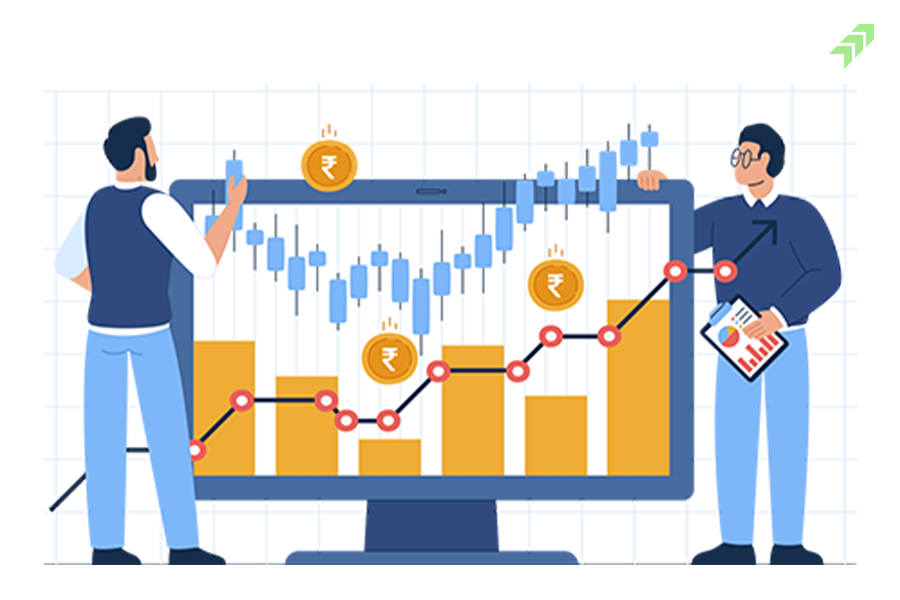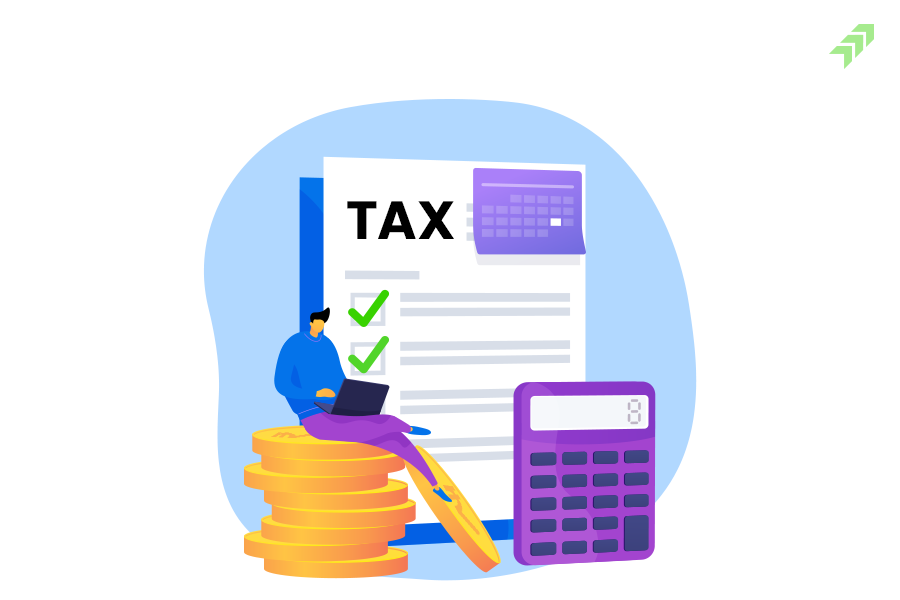Just like Nifty Future, you can also find the Bank Nifty Future to trade in the F&O market to get the advantage of price fluctuation in the banking stocks. As the name suggests NIFTY_BANK Future is the future contract price of the Index of Bank Nifty with a certain lot size (currently 15) and margins required to trade.
If you are interested in trading in NIFTY_BANK Future, then before we proceed to know how to trade in the underlying future or know about the best trading strategies. We need to have basic understanding about what is Bank Nifty Future, what is its lot size, volatility, what is margins requirement to trade in the Bank Nifty Future and many more.
What is Bank Nifty Future?
Bank Nifty Fut contract is the forward contract based on the Bank Nifty Index, traded on the exchange with different expiries and contract sizes. Currently 12 banks from the private as well as public sectors representing the banking sector of India and have a significant volume in trade.
As per the NSE exchange, Bank Nifty futures contracts have a maximum of 3-month trading cycle. And you can buy the near month, next month or far month contract with the different expiry dates.The minimum value of the Bank Nifty Futures contracts may not be less than Rs. 5 lakhs at the time of introduction. And the lot size of the contract is permitted by the exchange.
How Does Bank Nifty Futures Work?
The future price of any underlying asset or indicator is the forward market contract traded on the exchange with the different months (3 months) expiry dates. Bank Nifty Future allows traders to trade in the banking sector with the price fluctuation of all leading banks.
The Bank Nifty Future is traded with the theoretical futures price of the spot Bank Nifty index. The base price of the contracts on subsequent trading days would be the daily settlement price of the futures contracts. As per the exchange, there are no day minimum/maximum price ranges applicable for BANKNIFTY futures contracts traded on the exchange.
Lot Size& Margin of Bank Nifty Future
The lot size of the Bank Nifty Future contract is stipulated by the exchange and is revised from time to time as per the movement in the Bank Nifty Future price. If the Bank Nifty future price moves higher and keeps trading for many days, then the exchange might reduce the lot size and vice-versa.
Currently as per the NSE, the minimum market lot size of the Bank Nifty Future is 15 and you can buy or sell thereafter in the multiples of the 15 with certain margins required to trade depending on the total trading value and as per the current volatility of the Bank Nifty index.
Bank Nifty Future Margin
To know the margin required to trade in Bank Nifty Future there are certain types of margins included. The first one is the initial margin that you have to pay at the time of creating the trade position including the ELM and VAR margins. However, now every broker is liable to collect both these margins while ELM is no longer optional.
The second margin is the margin you have to pay or maintain on a daily basis which is called the MTM (mark to market) margin and is calculated on the basis of the price movement of the underlying index. Depositing the margins helps to reduce the risk of recovering the money from the trading members when there is a huge or unexpected movement in the price of the underlying asset.
Bank Nifty Maximum Lot Size
As per the exchange, there is a different quantity freeze limit for different indices. For Bank Nifty Future & Options the quantity freeze limit or the maximum units you can buy or sell per order is 900, while the maximum lots per order or the quantity freeze limit/lot size is 36, effective from 01-Jan-24, as per the NSE circular.
Bank Nifty Future Trading Strategies
Earning profits by trading in the F&O market is not everyone’s cup of tea, you need to trade cautiously using the right trade strategy with your emotions in check. The bank's nifty future trading strategy can be applied to the different market conditions and risk-bearing capability of the traders. However, below we have discussed about best trading strategies that you can use to create a position in Bank Nifty.
Also Read: NSE Option Chain Analysis: How It Works & What Does Indicate
Follow the Trend
Under this strategy, you have to create the position as per the current trend running in the Bank Nifty. And to know the trend you can use various tools or technical indicators like drawing the trend line or using the MACD or RSI to confirm the trend.
Also Read: How to Identify Trend in Stock Market: 10 Points to Find Trend
Swing-based Trading
Use the candlestick chart patterns or other charts to see the swings in the price movement in the Bank Nifty Future. Swing-based trading is more effective or can give profits only after there is high volatility in the underlying assets or in the Bank Nifty Future.
Also Read: Swing Trading Strategies Indicators & Best Stocks
Breakout Trending
You can also trade in the Bank Nifty Future if there is a breakout or breakdown in the price movement. Although breakout can be risky to trade, it depends on market sentiments and often trader need to see under the hood to confirm the trend, if the broker out is lead majority of the banking stocks or dominant players are pulling the index to the breakout. As of today, HDFC bank hold around 28% in Nifty bank index, a decent movement can pull the market up or drag it down. When there is a confirm breakout, a trader can create a long position and vice versa.
Also Read: What is Breakout & Breakdown How to Identify Breakout in Stocks
News-Based Trading
This is another effective trading strategy that you can use in Bank Nifty Future. If there is any news or economic activity in the banking sector, that can affect the price movement of banking stocks, then you can create the trade position accordingly.
MACD for Crossover
Using the Moving Average Convergence Divergence indicator while trading in Nifty bank Script can help trader to know the right levels of buying or selling the underlying. MACD is often displayed with a histogram and traders use the MACD’s histogram to identify when bullish or bearish momentum is high and possibly for overbought/oversold signals. Indicator can often through false signals, so it is suggested to use combination of indicator to get confirm trade.
Also Read: How to Use Moving Averages in Trading & Convergence Divergence
Range-Based Trading
Range-based trading is also one the most popular trading strategies that you can use for Bank Nifty Future. You can use the support and resistance levels to find the trading range of the index and create the long or short position when the index moves closer to these ranges.
Also Read: What is Short Selling & How Does it Work: Is it Good or Bad
Risk Management
Trading without risk management can cost you in terms of losses. Hence, while trading in the Bank Nifty, always use the stop-loss to limit your potential losses. Also, keep in themind, that never take the risk more than you can afford to lose while trading in the F&O market.
Also Read: Types of Risks Associated with Investing in the Stock Market
Best Intraday Strategy for Bank Nifty Future
If you are an intraday trader, trading in indices like Nifty, Bank Nifty then you need to implement a trading strategy which combined various indicator or option strategy that yield you maximum gain with minimize losses. Though there is limited scope of trading in futures trading, you can trade in Bank Nifty options with the various options to trade in strategies like bull call spread or bear call spread etc.
Also Read: Best Option Strategy for Bearish Market: 7 Option Strategies
For intraday trading in Bank Nifty's future, you can apply various trading strategies like creating a long position when there is the possibility of an increase in the index. While in a downfall market, you can create a short position in Bank Nifty Future with better chances of gaining profits.
Also Read: How to Do Intraday Trading: Best Stocks, Charts & Strategies
Nifty or Bank Nifty Which is Better for Intraday?
The Nifty is the main index of the NSE, containing the stocks of India's top 50 companies across various sectors, while Bank Nifty represents the top 12 banks in the banking sector of India. Though you can trade in futures contracts of both indices, there are pros and cons of trading for intraday in both indices.
The Nifty is a combination of multiple stocks from various sectors with different weights, and it is less volatile compared to sector-specific indices. Nifty Bank, on the other hand, is sector-specific, and any positive or negative news related to the concerned sector can create volatility. The banking regulator, RBI, is super active in pointing out discrepancies and doesn’t shy away from reporting and bringing them to attention, even if it’s a big bank or a small financial bank.
If you want to trade in Nifty Future or Bank Nifty Future for intraday trading then you can consider certain criteria to choose which one is better for day trading.
Also Read: Short Term trading v/s Intraday trading: which one is more profitable
Level of Volatility
As we have told you owing to sector-specific exposure the Bank Nifty is more volatile than Nifty. In Nifty 50, there are stocks from different industries, hence it moves slower with the combination of increase and decrease of stocks having different weightage. Bank Nifty is suitable for intraday trading as it can give better returns but also there is high risk in trading.
Combination of Stocks
The nifty index represents the entire market and you can play a safe game for intraday trading as it is exposed to a well-diversified group of companies from different sectors. While Bank Nifty contains only the stocks from the banking sector that is easier to track or analyse while considering the fundamental factors of the banking industry and price movement of the index.
Also Read: Why is Fundamental Analysis Important for Investing in Stocks
Lot Size & Margins
The lot sizes of the Nifty Future and Bank Nifty Future are different and their market prices are also different resulting having different trade values. Hence, for intraday, you can choose the Nifty or Bank Nifty as per your budget and ability to take risks.
To understand better, let's take an example where the Nifty Future is trading around 22500 and the lot to trade in the Nifty Future is 25, which means your minimum trade value is Rs 5,62,500 (22500*25). The Bank Nifty Future is trading at around 48200 levels, and its minimum lot size is 15, making your minimum trade value of Rs 7, 23, 000 (48200*15).
As can be seen in the example above, the Bank Nifty's minimum trade value is much higher than the Nifty Future. Even though only a percentage of the trade value is charged as a margin requirement over the added volatility of the index while entering trade, because Bank Nifty is more volatile, you have to deposit more margins to trade in F&O.
Hence, for Intraday trading, if you are ready to take high risk with high budget to trade and if there is any news or activity in the banking sector, you can choose to trade in the Bank Nifty. However, for safe trading, you can go with Nifty Future if there is no movement in the banking stocks.
What are the Risks of Trading in Bank Nifty Futures?
Traders who are ready to take on volatility in the hopes of earning bigger profits when there is news or economic activity pertaining to the banking industry trade in the Bank Nifty indices. To prevent significant losses, traders should be aware of the drawbacks associated with trading the underlying before executing any long or short positions.
Many traders prefer to trade in the Bank Nifty as they are ready to take risks with the scope of getting higher returns, especially when there is any news or economic activity in the banking sector. However, there are certain risks also involved while trading in the Bank Nifty that you need to understand before creating any long or short position to avoid huge losses.
Risk of Volatility (VIX)
As told earlier, volatility of Nifty bank index is higher as compared to Nifty50 indices because credit is the growth engine of any economy. A 500 – 700 movement in banking index is considered normal for experienced traders. GDP data, PMI numbers or any favourable or unfavourable economic activity affects the banking sector.
Also Read: VIX India: How it Works, Calculated & Used for Share Trading
Risk of Liquidity
The liquidity in Bank Nifty is enough to buy or sell a futures contract anytime during market hours. However sometimes due to less volume of trade in banking stocks, there could be liquidity problems, especially if there is no significant activity in the financial sector resulting in making it difficult to book profit or exit from your trade position.
Margins Penalty
Trading in futures contracts you need to deposit and maintain the margins on a daily basis as per the closing price of the underlying asset. As the Bank Nifty future is highly volatile, and if you fail to maintain the margins you have to face the penalty imposed by the exchange.
Also Read: What is F&O Margin Penalty: SEBI Rules & How to Avoid it
Risk of Leverage
The future contracts are also very highly leveraged instruments, which mean you get the margins to trade in a large position, hence there is a risk of losing a higher amount of money if Bank Nifty Future moves against your expectations and you incur the loss.
Risk or News or Events
Apart from that there is a risk of unexpected movement in the Bank Nifty index if unfavourable economic activity or corporate actions come into the market. Hence you need to be very careful and alert while creating a trade position in the Bank Nifty Future.
Risk of Regulatory Actions
Credit is base of growth for any emerging or developing economy. Therefore in order to keep the base strong, the banking sector should work with strong checks and balances aka higher regulations. There is a risk of regulatory actions or changes in monetary policy also affecting the stock price of banking stocks. Hence, trading in the Bank Nifty future is also risky due to the risk of regulatory frameworks.
Wrapping Up
Bank Nifty Future is the forward contract of Bank Nifty containing India's leading and top-traded stocks representing the banking sector of the Indian economy. Bank Nifty Future provides a better trading opportunity for traders to create trade positions in future contracts with high margins of trade and enjoy higher profits if the index moves as per your expectations.
However, trading in the derivatives or F&O segment is very risky compared to the cash market. Hence, it is highly recommended to take advice or tips from the market experts before trading in the F&O market. You can choose Moneysukh to get trading tips and recommendations for cash as well as derivatives market with the right trading strategy along with the best online trading platform.
Here, you can open a demat account with the best features and lowest brokerage charges. Moneysukh is among of the best discount brokers in India and offers a one-stop for trading and investing solution in various segments like equity, commodity and currency markets.
Also Read: Discount Broker vs Full Service Broker: Difference & Which is Best
















